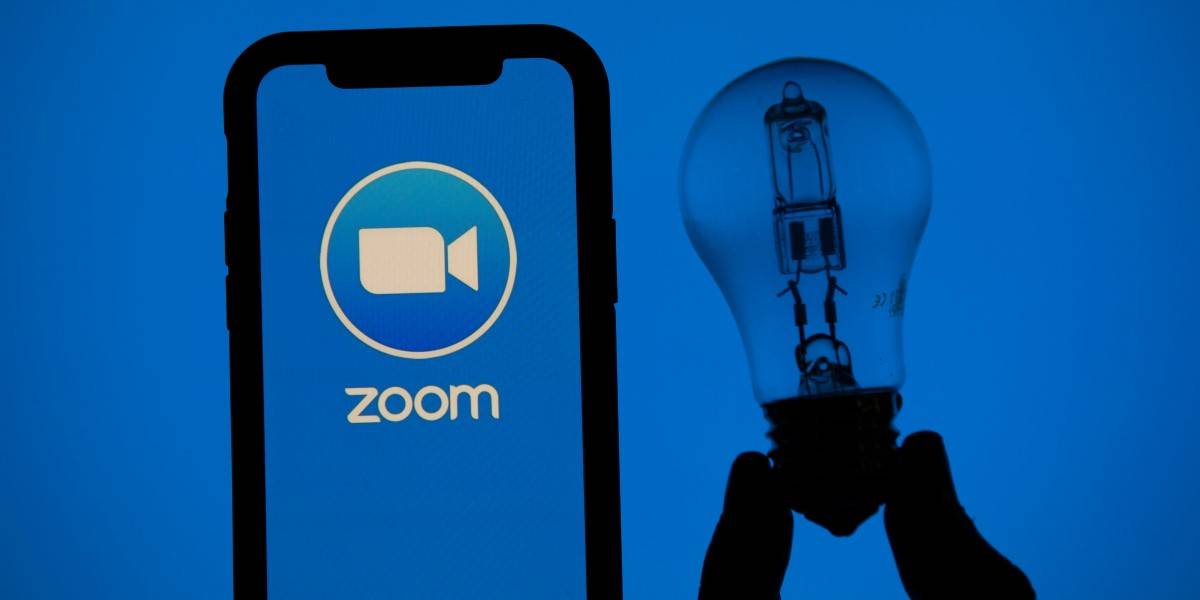“Our product is so bad, WE won’t even use it.”
It’s not bad though. Zoom is great. Apparently their leadership sucks, but as a product its always done what I needed it to do without issue.
What are you comparing it to? Zoom is mediocre, in my experience. I’ve honestly had a better experience just using hangouts on Slack
It’s pretty bad when your CEO disparages your product that much. It’s like if Microsoft CEO Satya Nadella said they’d be switching to Google Workspace because Microsoft Teams was inefficient and difficult to use.
Absolutely scathing.
Isn’t this like the second time the ceo said something like that? I think he probably needs to be unseated from his position.
Zoom does legitimately suck though, but not for the reasons he thinks. Moreso from a privacy perspective.
Let him keep shit-talking Zoom until my employers switch to a better alternative!
Fair enough! :)
He’s not saying Zoom is a bad product.
Teams and Zoom are great for remote work, and I get how a lot of people love just dialing in to meetings, but there’s definitely a different dynamic to being in the office.
During the pandemic my dev team grew from two people to six. Since it was in waves we got to try being at the office and being at home using remote work only interchangeably.
Especially as a manager I see the benefits of working in the office. Not necessarily every day, but regularly.
Not necessarily from a raw productivity perspective. The office has a lot of apparent drawbacks, but these drawbacks are what triggers the dynamic that makes the office better - at least for me and my team.
I find that the office conversations triggers more ideas and better collaboration.
With my manager hat on I find that it’s easier for me to see if I need to get involved in discussions or let people handle it themselves.
People are different, teams are different, but it’s not black and white.
People love the flexibility of remote work, and some people are certainly better off working “alone” at home than being with the team, but for me it’s all about finding the balance. I don’t want to micromanage anyone, but there’s a reason a lot of people need managers, and that is simply that left to their own devices they will start working on 200 things and not finish anything.
As boring as it is our job is to deliver value to the company.
But on occasion, I will let people run wild with ideas and see where it goes. And then rein them back in when there are deadlines to be met.
As someone else in management I would take the higher morale boost I have from my completely remote engineering team to some “good conversations” and “interesting ideas” that may pop up from time to time. It’s not their job to come up with that shit. It’s either mine or products and they are definitely able to do it organically if you facilitate casual working sessions that promote conversation over productivity.
Edit: also if you have people who can’t manage their work without you stating over their shoulder that’s a failure on your part not theirs. Yes some people just aren’t cut out for some jobs but if the difference is being remote or in the office that is totally on you.
deleted by creator
Agreed with this. But that’s part of the problem. It takes effort to foster those conversations and “casual working meetings” like you stated. Many managers that push for back to office just don’t do that.
We are going through a transition where we need to change how we work top to bottom.
Those who are less adaptable will push for the older way of doing things because the older way is more efficient for THEM. They aren’t wrong, they just don’t know they would be more successful if they changes how they worked.
Typical manager mentality.
You are trying really hard to keep your micro manager position aren’t you?
Maybe understanding the nuance will help get everyone what they want, rather than talking past each other.
If people are working on 200 things at once it’s your job to provide them with clear cut tasks, priorities, and deadlines.
deleted by creator
No, he’s saying that the product is ineffective at what it aims to do.
deleted by creator
Unless he doesn’t believe zoom is intended to solve the problem of remote work.
There’s a difference in scale of making a zoom call occasionally to add flexibility and having your entire business run off zoom for its day to day. Some things you’d want to solve for in the second but not the first case: Remote learning, team building events, snack distribution.
Offloading the entire office experience to remote isn’t as easy as just using a video conferencing app.
Unless he doesn’t believe zoom is intended to solve the problem of remote work.
Remote work fucking MADE his company into what it is today. Nobody even heard of Zoom before the pandemic. They were a nothing company with a shitty product amongst many. He knows this very well, he just can’t keep his own micro-managing inner asshole down.
And yet it still won’t solve all the remote work issues. There is no silver bullet
I’ve been working remotely in game development for 10 years. A highly collaborative field. Requiring artists, producers, engineers, designers, QA, and marketing all communicating across levels. Meaning junior designers need to talk to lead engineers and everyone wears many hats.
You are completely correct. In fact, zoom is a terrible system to use. I highly recommend no one use it for remote work. Use Google meet, discord or mumble for persistent voice and video. Use slack, discord, or teams for text. Use Google docs or confluence for document sharing. Use trello, Asana, jira, or hacknplan for task planning. Use Miro for idea boards.
You need a full suite of services but not in a single field would I recommend zoom. It’s such a bad piece of software that I’d literally recommend jitsi over it.
This is probably why they are returning to the office. Their software is so bad they’d have to use something else to be productive and the best way to save face there is to say that your software isn’t unique and that no software can replace physical offices. In reality you have full business that have been remote for decades without problems. Business that require far more collaboration than zoom.
Remote work is such a boon to workers, and from my perception there is not a lot of benefit of mandating in-person work.
It really feels like the push to return to in-person is primarily driven by a combination of propping up the industrial real estate industry as well as managers not trusting their employees, and perhaps some level of maliciousness towards employees.
The return on investment on operating an office space for the nominal increase in productivity really makes in-person work feel like it’s only for the managers’ egos.
The fact that the Zoom CEO is pushing for this to me does not represent a lack of faith in their product, but a strong desire to squeeze every drop of productivity out of their employees regardless on quality of life and regardless of return on investment of the cost of operating the office.
Nestled at the end of the article is the following quote, coming from survey data
But there’s also the power trip. Remarkably, a recent survey of company execs revealed that most mandated returns to the office were based on something as ironclad as “gut feeling,” and that 80 percent actually regret ever making the decision.
I think the reality is that like most policy decisions at a workplace, they are based on nothing. They simply are drawn from how the people at the top feel like an organization should be or because that’s simply how these decision makers are used to (or comfortable with) doing things.
I truly think it’s just the corporate real estate thing. Those 80% that regret return to office are CEOs that weighed the loss from real estate contracts against the blowback from forcing employees back to office, and they are saying that they feel they made the wrong decision.
I might argue this statistic also shows that 80% of CEOs underestimate the value of their employees. Not exactly a hot take in 2023, but it’s fun to put a number to it.
I dont understand this real estate thing. Cancelling contracts or having empty space is still cheaper than everyone back in the office.
More people in the office means more maintenance, more snacks, more hvac needs, etc.
If you have an unutilized asset, there’s pressure to get rid of it for the cost savings.
If you sell your asset at a loss, it looks bad for you and the company. Same for paying cancelation fees.If you legitimately think that you’re going to need that space in the future, for example because you think that we’ll find an equilibrium between “everyone work from office” and where we are now, and that we’re trending towards an organic level of office need/desire higher than we’re at now, you might see selling now as the first step to needing to buy again later, likely for higher than you sold for. So you try to “mandate” the equilibrium that you expect so you’re not in a position to have to explain why you’re holding onto a dead and losing value property.
Executives spend a lot of time talking to people and having meetings. The job selects for people who thrive on and value face to face communication. Naturally, they overestimate how much that social aspect of the job is true for everyone else, so they estimate that the equilibrium will have a lot more office time than other people would.
To make it worse, the more power you have to influence that decision, the more likely you are to have a similar bias.This isn’t an excuse of course, since you can overcome that bias simply by telling teams to discuss what their ideal working arrangement would be, and then running a survey. Now you have data, and you can use it to try to scale offices to what you actually want.
We keep hearing about ‘productivity’ in this context. Let’s explore that - back in the days when people were 5 days/week in the office, supervisors and managers concentrated on attendance and punctuality. They still could but now they are focusing on being in the office. In both cases these are proxy measures- they don’t directly measure output. What is this ‘productivity’ here? Because the actual verifiable data tells the opposite story
Basically, I think it’s exactly what @Gaywallet@beehaw.org was saying: these decisions aren’t being made with any actual facts/ data as the basis. The decisions are solely based on “gut feelings” of the higher-ups. Attendance is the only way the higher-ups know how to gauge productivity, and that is going to trump any actual productivity data.
Funny thing; my company was using Zoom long before the pandemic. It was useful for organizing meetings between offices, and at the time was the only product with good enough sound quality to actually understand people connecting from low bandwidth connections.
As the pandemic was moving to “business as usual” mode, the company did a quantitative analysis of 5-day vs WFH, plus did an employee survey on 5-day vs hybrid vs WFH. Based on those results, they went to a hybrid model for a few months and then ran another quantitative analysis: end result was that WFH model was permanently adopted for all roles where it made sense, and the company started selling off properties.
Zoom’s still used because it was able to handle all these work models, but the company has its own contract with Zoom and would never touch the default agreement. If Zoom tried that at this point, they’d just lose a large customer.
So thoroughly CEO-brained he’s sabotaging his own business. He’d rather have his serfs in spitting distance than a future for his company. Truly incredible.
Have you ever micromanaged so hard that you micromanaged your way out of micromanaging?
deleted by creator
If they can’t have debates over zoom meetings that’s a culture problem, not a technology problem
Yeah. I doubt they can have debates in person, either. But getting 7 people in a room so that the 2 highest paid ones can ideate all over each other while the other 5 nod along as a paid audience just feels better for those 2 than looking up to see the glassy-eyed stares of people who are trying to get their work done while sitting in on a pointless vanity meeting.
Wow, well said. I wonder if the arguement that “working in the office is important so that younger/newer employees can recieve mentorship” is just a theme and variation on the same thinking.
working in the office is important so that younger/newer employees can recieve mentorship
That has real “I can’t mentor someone unless we’re at the strip club” energy.
Not really. There is a lot of mentor activity that is easier in person because of how asking follow up questions works. In person it is easier to convey intent and ease worry for people doing new things just like how video conferencing can be easier than email depending on the topic. Or how mentoring is generally better than just giving someone a manual and not answering any questions for complex tasks.
That is not to say it is necessary most of the time, and the cries about everyone needing to be in the office because of mentoring doesn’t make sense for people other than the mentor and new staff. That tends to be projection by people who can only handle communication in person.
Maybe it depends on the specific field, but I’ve had no issues mentoring people remotely, and even when I was in the office I was doing it via Teams half the time.
In many contexts it isn’t that hard if you have the tools. The fact that many workplaces skimp on the tools is a them issue, not a mentoring issue.
Maybe it’s different for the upper management types, but for me I am easily 3x more productive at home in < 6 hours than I ever was at 8+ hours in the office.
There are soo many distractions in the office environment we had (cubicle farm). People chatting behind me, constant noise, people coming up to my desk throughout the day to ask me something and disrupt my entire workflow.
I work in my quiet home with headphones on listening to music. When people need something from me they ping me in Teams or send an email and I get to choose when to stop my work to respond. And when I really need to focus I can throw on Do Not Disturb mode. In the office “Do Not Disturb” was me booking a conference room for myself to work in silence.
I love how they sometimes record these higher-level presentations, stage lights and all, right in front of where I work in the office. I am way more productive at home.
There are people who have distractions at home and want to escape of course. I’m not stopping them from working in the office though…
Realistic scenario: half the workers show up in person just to log into a video conference anyway because the other half is remote.
It’s funny because it’s true.
I work in a field where the vast majority of the work done requires an on-site presence. But meetings? I log into those. Even when the physical venue is a half dozen offices from me.
Yeah yeah, let’s unite together into a union then
I think its time for you zoomies to start doing the voomies and voom out of that company. lots of nice companies that value you and pay well that are remote.
At work Teams has been great.
Zoom is too bare-bomes.
The I hacked it together at 3am feel of the zoom interface makes me actively hate the damn thing.
Like teams feels like a communication application. Zoom feels like a hobby project.
Teams on Linux is pretty garbage though. They removed the desktop app and replaced it with a half-baked PWA which is exceptionally buggy on every browser, even Edge. I can’t believe I did so many interviews over Teams this year, thankfully none of those jobs hired me and I got another job using Google Meet which actually works lol
Lol, I am the opposite.
- Teams feels bloated and buggy.
- Zoom is fast, can handle 100+ streams with ease, and allows mods/plugins to extend as far as you want, and
- on zoom you can draw on the other person’s screen while sharing.
- On zoom, when a meeting starts I have a “incoming call sound” so I drop what I am doing and jump on the meeting. (I can’t install on my work compy though… Sigh)
Teams has not implemented those basic features.
Teams definitely feels bloated, but having used it for years at my lost job, I can’t say I ever found it buggy. The only issue I ever had with it was actually with my bluetooth headset sometimes not being recognized, but it was never clear if that was an issue with Teams, or Windows, or the headset itself.
The Outlook integration for planning and joining meetings was super handy. If there was some way to get email in Teams then I never would have had to open Outlook again. That would have been nice.
I think the features need a lot of refinement, though. Having threaded and non-threaded chats is clumsy at best. I found the threaded chats to be far inferior, and the inability to search for non-threaded chats was very limiting. Search in general was borderline useless.
Unfortunately it’s the only viable option for some of our executive team meeting. I live in a country where there are two official languages and we sometime needs to have interpreters so that those who only speak one language can participate. The Interpreter feature of Zoom, with multiple audio tracks is mostly the only reason we’re stuck with them.
Fair.
We use the sign interpreter feature in Teams and it’s really good. The live captions struggles a bit with the Aussie accent though.
But mostly it’s the SharePoint/OneDrive/Outlook/m365 integration I find useful. If I was on Linus or macOS, I suspect I would feel differently.
OneDrive on Mac is ass.
This is ridiculous. CEO must be a nightmare of a boss
As mandated in their invisible job description
The irony of the situation still seems distant to the CEO. According to the leaked meeting on August 3, Yuan told employees that Zoom the product does not allow Zoom the company to “build as much trust or be as innovative as in the office.”
Of course it doesn’t. It allows people to communicate remotely. But it’s not a 100% substitute for meeting people in person, and pretending otherwise would be stupid. Of course meeting in person builds more trust than video-chats. And discussions on a real whiteboard can be much more productive than on a video call, depending on the topic.
So why does it even exist
Why does the telephone exist? Zoom exists for the same reason. To let people talk remotely. It has some extra features a telephone doesn’t, but that’s it. It’s not supposed replace meeting other people.
Now,
- I totally think that in Zoom’s case, there’s no real reason to bring employees to the office, and this is just a corporate power play.
- I also think there’s no point for Zoom to exist when there are great open source alternatives.
But the particular argument this article lays out just makes no sense.
Of course meeting in person builds more trust than video-chats
I disagree with this statement. Every study I’ve seen trying to examine the difference between “in person” and “virtual” has been poorly designed or resulted in inconclusive results. Retrospective studies on team dynamics often fail to account for spaces critical to trust-building such as water-cooler talk and outside of work events, and fail to replicate virtual versions of predominantly in-person activities. Studies which use naive individuals and compare person to person interaction as compared to virtual are either inconclusive because they involve tasks in which trust is built in the concept of a game and how personal someone is does not matter as much as the task at hand, or do a poor job of measuring trust and are actually measuring other aspects of interpersonal relationships.
And discussions on a real whiteboard can be much more productive than on a video call, depending on the topic.
I primarily see this as a failure of digital technologies and adoption. There are wonderful digital whiteboarding apps, but they are not included in the most prominent digital meeting technologies yet and free products tend to have a poor user experience. There’s also an issue of how you are measuring “productive”. Scientific measurements on productivity show that whiteboarding and brainstorming are often not actually productive when you evaluate based on the quality of the end product, despite being perceived as productive. If you’re measuring how people who worked on the product feel about the direction and the end result, however, there’s a bit to unpack about teamwork and managing emotions.
But the particular argument this article lays out just makes no sense.
I think the point of the article is to show that the CEOs empty words are empty and to provide a framework for which one can critically examine them. You’re probably overthinking the difference in meeting modality, which is a much more complicated question - in fact, I would argue that a lot of commonly bandied insights about business are based on fluff or nothing at all, but rather “gut feeling” as the article so aptly puts it.
I think the point of the article is to show that the CEOs empty words are empty
Maybe. To me it read more like: “According to Zoom’s CEO, Zoom can’t fully replace in-person interaction for work. Therefore, it’s bad/useless software - or the CEO is bullshitting.” Which is just bad reasoning. The conclusion doesn’t follow from the premises. Maybe I’m just taking it too literally, but I just don’t like when articles use such bad reasoning, even if I agree with their conclusion.
fail to account for spaces critical to trust-building such as water-cooler talk and outside of work events
What do you mean by that? If you are fully virtual there’s going to be no water cooler talk - but that’s a legitimate difference between in-person and virtual that should affect the results of the study. So it makes sense to me that the study shouldn’t try to control for that.
and fail to replicate virtual versions of predominantly in-person activities
I don’t think you can. Take for example board games as an in-person activity. The virtual replacement would be video games. A video game can do everything a board game can (with some exceptions) - but it can do so much more. So, purely from a game design perspective, video games would be much better. The main thing that video games don’t have, while board games do, is the in-person interaction. Yet, there’s plenty of people who play board games, but not video games. Clearly the in-person part is important.
If you are fully virtual there’s going to be no water cooler talk
Physically, yes, unless you’re attempting to recreate a water cooler in VR or something. However, I would argue that offtopic slack and teams channels and direct messages offer similar benefits. Dedicating time at the beginning of meetings to just chat, or otherwise encouraging off-topic chatting can also be a decent stand-in. This can all be enhanced by being a little bit more openly personal at work - having worker directories or homepages where people submit pieces of information about themselves or customize it to their liking can also convey the same or similar information that’s shared in water cooler talk environments.
When I said they fail to account for this, it’s that they aren’t comparing to mediums which convey the same information in different ways. They’re comparing a rich, diverse communication environment to a deprived one. These considerations are important when you’re trying to make the evaluation of whether the medium is at fault or whether you’ve just poorly controlled additional factors.
I don’t think you can. Take for example board games as an in-person activity. The virtual replacement would be video games. A video game can do everything a board game can (with some exceptions) - but it can do so much more. So, purely from a game design perspective, video games would be much better. The main thing that video games don’t have, while board games do, is the in-person interaction. Yet, there’s plenty of people who play board games, but not video games. Clearly the in-person part is important.
This isn’t a well-controlled comparison. You’re comparing two vastly different things. Comparing board gaming in person to VR board gaming might get you closer to understanding what is important or higher quality about an in-person interaction versus a virtual one, but even then there’s still many aspects which are tough to control for. Generally speaking most science I’ve read on the subject has to do with the quality of communication present. Comparing text to audio to video mediums we’ve found out many important differences between modalities of communication. With only text, it’s difficult to fully understand what people are trying to communicate - adding an audio medium allows for a more complex message to be conveyed, which is once again improved with the addition of body language and further complexity which comes via video. The difference in complexity of message between video and in-person mediums primarily has to do with the quality of the signal and the tools permitted. The difference in how we perceive the two has a lot more to do with personal preference and complexity of the message than anything else. There are important considerations to be made here, but I have yet to see any studies which show any meaningful difference in message between the two mediums, unless we add additional complexity such as messages which involve other senses such as ones which incorporate smell or touch.
which is once again improved with the addition of body language and further complexity which comes via video.
Maybe it’s just me, but, I 've never felt that video calls add the body language element that in person communication has. I mean, I get a very different feeling (and my facial expressions, are different because of that) when looking directly at the camera than the one I get when making eye contact with the other person. Doesn’t this mean that you actually add an altered body language to the interaction?
Or is this something included in what you meant with “further complexity”? Not sure what you were referring to there.
Complexity or density of communication has to both with the modalities involved (auditory, visual, etc.) as well as the richness of what is conveyed (how much information is conveyed in each modality). I spend the majority of my time focused on the modalities portion of communication because it is most relevant to the discussion around communicating via different methods such as text vs phone vs video. However, you are correct to point out that how rich the communication is depends on the modality.
The most common way this shows up is an issue of hardware - if the camera you are using is of low quality or the internet connection cannot support it, the video signal is often compressed and information is lost because of this. What is available in frame versus not in frame also affects the richness. If I’m sitting in a chair and the camera can only see the upper 3rd of my body, you would be unable to see what my legs or feet are doing, which affect the richness of the signal. In addition, as you’ve mentioned, people act different in different situations - they may not communicate the same body language in all modalities. Human behavior itself is important when it comes to the richness of information conveyed. In fact, people often modify their behavior in response to the reduced richness of the signal! People have ‘phone voices’ when they are on the phone where they exaggerate or flatten their voice to counter information that is lost via transmission depending on their pitch register and other factors. A ‘radio voice’ is another common way in which people modify their speech over an auditory medium to enhance the signals they care most about. When communicating purely via text, people can add images and emojis, or change the very message itself to be sure important pieces of information are not missed (such as adding lol or /s to convey meaning). Even over visual mediums people find ways to change their behavior in response to the modality and may exaggerate certain movements or learn to conduct themselves in specific ways to ensure the communicated message best matches their intent.
I think it’s also important to note, as you did, that these changes and differences aren’t always intended and are a direct response to the medium and how we think, as well. It’s not uncommon for people to be entirely uncertain where to look when using a camera to project themselves to others. People often get nervous and change how they interact when speaking in public. Observing a child who’s only just learning that you can talk to people over phones or video chat exposes all kinds of idiosyncrasies of communication. People go to school to learn how to act on a stage, in front of a camera, over the radio, and through other mediums to become better communicators in mediums where richness might be affected or where they want to learn skills to better convey the same message.
This isn’t a well-controlled comparison.
It is. If you’re going to virtualize a board game, there’s no need to stick to the limitation of a physical board game. So, once you make full use of the virtual environment, you get a video game. If you compare to just virtualized board games, then you’re artificially disadvantaging the virtual side.
PS. I also added this significant edit to my last post (bad form for discussion, but it makes more sense there than here)
I think the point of the article is to show that the CEOs empty words are empty
Maybe. To me it read more like: “According to Zoom’s CEO, Zoom can’t fully replace in-person interaction for work. Therefore, it’s bad/useless software - or the CEO is bullshitting.” Which is just bad reasoning. The conclusion doesn’t follow from the premises. Maybe I’m just taking it too literally, but I just don’t like when articles use such bad reasoning, even if I agree with their conclusion.
MS Teams comes with a pretty good Whiteboard app as well.
The truest test of post capitolism. Can a company make a communication product so poorly that said company couldn’t even use it to unionize?
We’ve already had Skype. So it’s a yes.
Man. Fuck those guys!
— Zoom Video Communications, Inc CEO Eric Yuan (about Zoom Video Communications, Inc)
wow zoom just wow.


















